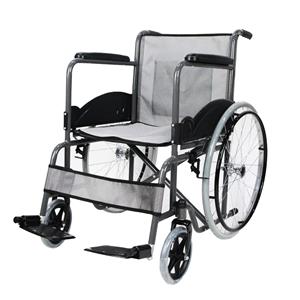Do Children with Cerebral Palsy Use Wheel chairs?
Cerebral palsy (CP) is a group of permanent disorders of the development of movement and posture, causing activity limitation, that are attributed to non-progressive disturbances that occurred in the developing fetal or infant brain. The severity of impairments varies greatly, and children's mobility ranges from independent walking to totally dependent wheelchair mobility, with almost one third being non-ambulant. This raises the question: do children with cerebral palsy use wheel chairs? The answer is a resounding yes, and the reasons are multifaceted.

The Importance of Mobility for Children with Cerebral Palsy
Mobility is crucial for the cognitive and psychosocial development of children. Independent mobility is vital for activity and participation, reducing dependence on caregivers and the environment. For children with cerebral palsy, wheel chairs can provide independent mobility, allowing them to explore their environment. This independence is not just about physical movement; it's about the ability to participate in daily activities, social events, and educational opportunities, fostering inclusion and reducing barriers to participation.
Types of Wheel chairs Used by Children with Cerebral Palsy
Pediatric Wheelchair for Cerebral Palsy have two main types of wheel chairs used by children with cerebral palsy: manual and powered wheel chairs. Manual wheel chairs offer independence and ease of use for individuals with good upper body strength. Options include lightweight frames for easy transportation and sports wheel chairs for the athletically inclined. Powered wheel chairs, on the other hand, offer freedom of movement with the touch of a button, especially for those requiring additional support, such as children with weak upper bodies.
Pediatric Wheelchair for Cerebral Palsy
Pediatric Wheelchair for Cerebral Palsy is specifically designed for children, with features that include tilt-in-space, recline functions, and customizable head, trunk, and limb support. These wheel chairs are adjustable to accommodate growth and changes in mobility needs. The use of wheel chairs for mobility indoors was found to be used by 29% of the children studied, while 41% used wheel chairs for outdoor mobility. The use of wheel chairs increased with age and was most frequent in the spastic bilateral and dyskinetic subtypes.
Statistics on Wheelchair Use Among Children with Cerebral Palsy
A cross-sectional study performed in southern Sweden in 2008 included all children aged 3-18 years with CP. The study found that 29% of the children used a wheelchair indoors and 41% outdoors. A majority of the children using manual wheel chairs needed adult assistance (86%), while powered wheel chairs provided independent mobility in most cases (86%). These statistics highlight the significant role that wheel chairs play in the lives of children with cerebral palsy, providing them with the means to move independently and participate more fully in their environments.
The Role of Wheel chairs in Enhancing Participation and Physical Health
Wheel chairs and scooters enable individuals with cerebral palsy to partake in daily activities, social events, and educational opportunities. They offer the freedom to navigate different environments, from schools and workplaces to parks and community centers, fostering inclusion and reducing barriers to participation. Promoting physical health and wellbeing is another critical aspect of wheelchair use for children with cerebral palsy. Wheel chairs can help maintain or improve physical health by providing a means for children to move independently and participate in physical activities.
In conclusion, children with cerebral palsy do use wheel chairs, and these mobility aids play a crucial role in their lives. Wheel chairs provide children with the means to move independently, participate in daily activities, and maintain or improve their physical health. Both manual and powered wheel chairs should be considered at an early age for children with impaired walking ability to achieve as high a level of independent mobility as possible. The use of wheel chairs among children with cerebral palsy is not just about physical mobility; it's about enabling these children to lead fuller, more independent lives.




